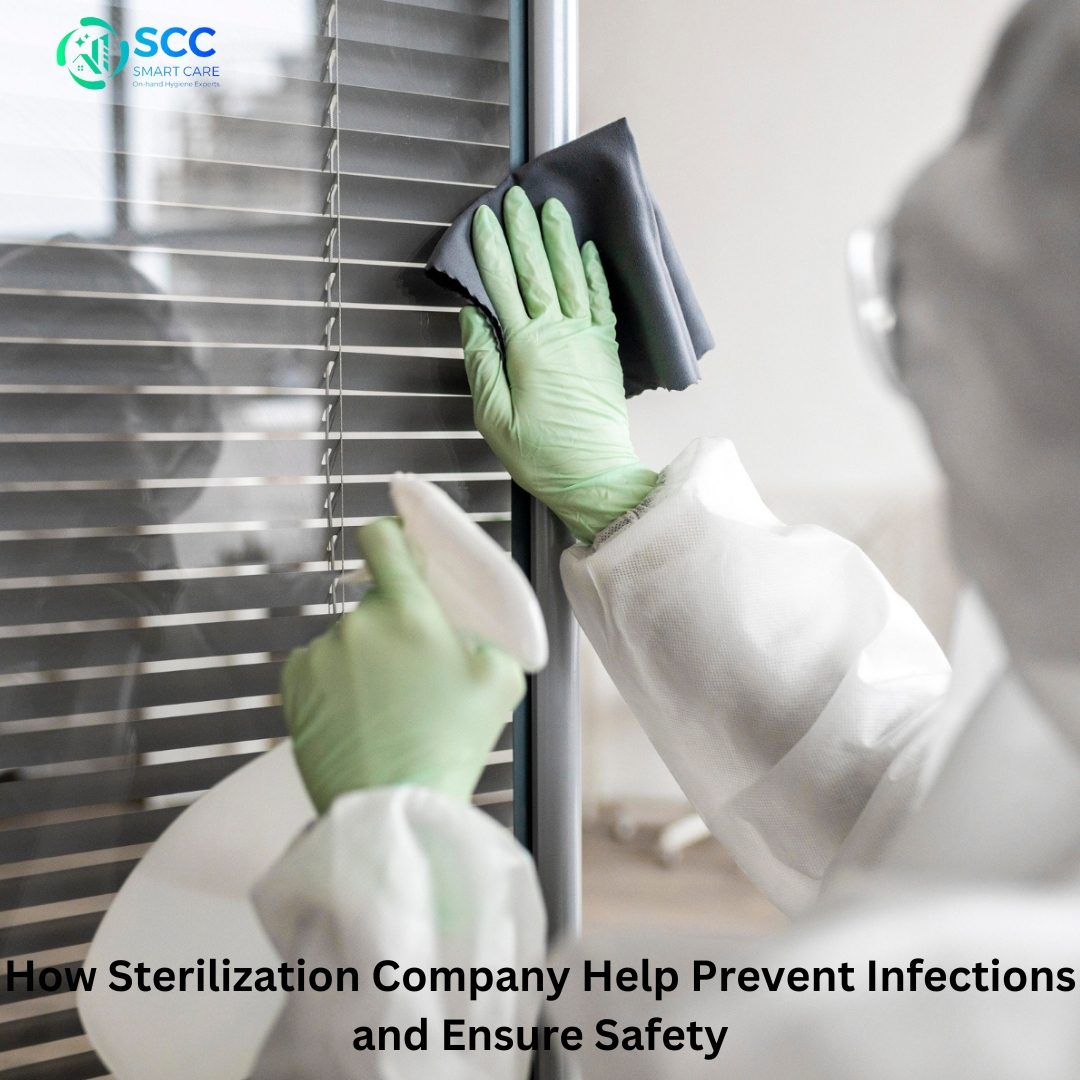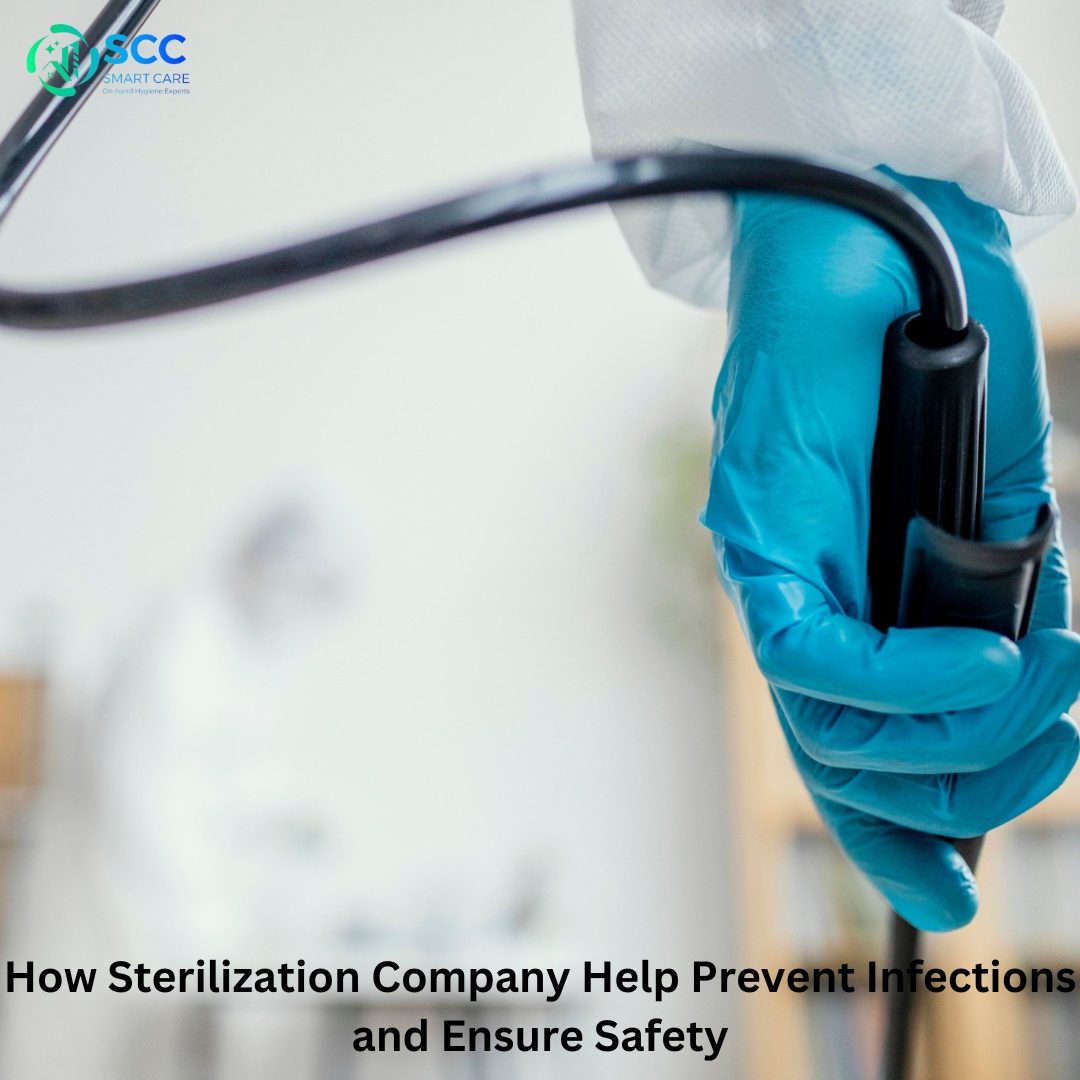In any healthcare setting, ensuring the highest standards of cleanliness and safety is paramount. At the core of these standards is the process of sterilization. sterilization company is essential in preventing infections and maintaining a safe environment for both patients and healthcare providers. Below, we’ll delve into why sterilization is so critical and how it helps ensure safety in healthcare settings.
Importance of Sterilization in Preventing Infections
sterilization company plays a pivotal role in preventing infections within healthcare facilities. It involves the elimination of all forms of microbial life, including bacteria, viruses, fungi, and spores, from medical instruments and surfaces. This is crucial because any remaining pathogens can lead to serious infections, particularly in patients with compromised immune systems.
By ensuring that medical equipment is thoroughly sterilized, healthcare facilities can significantly reduce the risk of hospital-acquired infections (HAIs). These infections can be life-threatening and are a major concern for medical professionals globally.
Ensuring Safety in Healthcare Settings
Ensuring safety in healthcare settings goes beyond preventing infections; it also includes creating a trustworthy environment for patients. When patients are confident that a healthcare facility adheres to strict sterilization protocols, they are more likely to feel at ease during their treatment.
sterilization company is a fundamental part of maintaining this trust. It demonstrates a commitment to safety and quality care. Healthcare workers, too, benefit from rigorous sterilization practices. By working with sterile instruments and in clean environments, they face a reduced risk of exposure to harmful microorganisms, which can lead to occupational illnesses.
Adopting stringent sterilization practices is a non-negotiable aspect of healthcare. It not only protects patients and healthcare workers but also upholds the integrity and reputation of healthcare institutions. Consistent and thorough sterilization procedures are thus indispensable in delivering exceptional and safe healthcare services.
The Sterilization Company Process
Sterilization is a multi-step process that ensures the elimination of all forms of microbial life from medical instruments and other surfaces in healthcare settings. This meticulous process is crucial for maintaining a sterile environment and preventing the transmission of infections. Let’s delve into the various methods used for sterilization and the equipment and techniques involved in the process.
Methods Used for Sterilization Company
Sterilization methods can be broadly categorized into physical and chemical processes. Physical methods include heat-based techniques like autoclaving, which uses steam under pressure to kill microorganisms, and dry heat sterilization, which involves high temperatures for extended periods. Radiation sterilization, through gamma rays or electron beams, is another physical method that effectively destroys microbial DNA.
Chemical methods, on the other hand, involve the use of sterilants like ethylene oxide gas, hydrogen peroxide, and glutaraldehyde. These chemicals penetrate surfaces and disrupt microbial cells, rendering them inactive. Each method has its own advantages and limitations, and the choice of method depends on the nature of the material being sterilized and the type of microorganisms targeted.
Sterilization Equipment and Techniques
The equipment used for sterilization varies depending on the method employed. Autoclaves are widely used for steam sterilization and come in different sizes to accommodate various instruments. Dry heat ovens are specifically designed for high-temperature sterilization and are used for materials that can withstand prolonged heat exposure.
Other specialized equipment includes UV light sterilizers, which utilize ultraviolet light to kill microorganisms on surfaces, and chemical sterilization units that apply sterilizing agents in controlled environments. Proper technique is critical to ensure the effectiveness of the sterilization process.
This includes correctly loading instruments into sterilization equipment, monitoring sterilization cycles, and adhering to manufacturer guidelines.Instituting rigorous sterilization protocols and continually updating them based on the latest research and technology is essential for maintaining high safety standards in healthcare settings.

Role of Sterilization Company
Sterilization company play a pivotal role in ensuring the safe and effective sterilization of medical instruments and devices. These specialized organizations provide a range of services that help healthcare facilities maintain the highest standards of hygiene and safety.
By utilizing advanced technologies and following stringent protocols, sterilization company help prevent the transmission of infections and ensure patient safety.
Services Offered by Sterilization Company
Sterilization company offer various services to meet the diverse needs of healthcare providers. These services include steam sterilization, dry heat sterilization, and chemical sterilization using agents like ethylene oxide and hydrogen peroxide.
Companies also provide biological and chemical indicator testing, which are essential for verifying the efficacy of sterilization processes. Additionally, many sterilization company offer validation and monitoring services, ensuring that equipment and protocols are functioning correctly.On top of that, training and consulting services are often available to help healthcare facilities develop and maintain robust sterilization procedures.
This can include staff training on proper instrument handling, packaging, and loading techniques, as well as guidance on selecting the most appropriate sterilization methods based on the materials and microorganisms involved.
Benefits of Outsourcing Sterilization Needs
Outsourcing sterilization needs to specialized companies offers several significant advantages for healthcare facilities. First and foremost, it provides access to state-of-the-art equipment and expertise that might be cost-prohibitive to maintain in-house. This ensures that medical instruments are sterilized to the highest standards, reducing the risk of infection.
Moreover, outsourcing can lead to increased operational efficiency, allowing healthcare staff to focus on patient care rather than managing sterilization processes. It can also provide scalability, enabling facilities to adapt to varying levels of demand without investing in additional infrastructure.
Finally, working with accredited sterilization company ensures compliance with industry regulations and standards, providing peace of mind and reducing the risk of legal and regulatory issues.By leveraging the expertise and resources of sterilization company, healthcare providers can enhance safety, efficiency, and compliance in their sterilization processes.
Regulations and Standards
Government Regulations on Sterilization
To ensure the efficacy and safety of sterilization processes, various governmental bodies have established strict regulations. In the United States, the Food and Drug Administration (FDA) plays a significant role in overseeing sterilization practices. The FDA sets guidelines for the proper use of sterilization methods such as ethylene oxide and hydrogen peroxide, and it also mandates rigorous testing and validation requirements.
Similarly, the Centers for Disease Control and Prevention (CDC) provides detailed best practices and protocols for healthcare facilities to follow. These regulations aim to minimize the risk of infection and ensure that medical instruments are sterilized to the highest standards.
Industry Standards for Ensuring Safety
In addition to government regulations, industry standards set by organizations such as the Association for the Advancement of Medical Instrumentation (AAMI) and the International Organization for Standardization (ISO) play a crucial role in steering sterilization practices.
AAMI offers comprehensive guidelines and recommendations on sterilization techniques, including steam sterilization and chemical sterilization methods. These guidelines cover everything from the materials and packaging to the actual sterilization process and monitoring.
ISO, on the other hand, provides a global framework that ensures the standardization of sterilization practices across different countries and regions.Adherence to these industry standards helps healthcare providers maintain uniformity and reliability in their sterilization practices, thereby minimizing the risk of errors.
By complying with both governmental regulations and industry standards, sterilization company and healthcare facilities can ensure the optimal safety and effectiveness of their sterilization processes, ultimately safeguarding patient health.
Through a combination of governmental oversight and stringent industry standards, the sterilization industry succeeds in delivering high-quality, reliable services to healthcare providers, ensuring the highest levels of hygiene and patient safety.
Sterilization in Different Settings
Sterilization in Hospitals and Clinics
Effective sterilization is crucial in hospitals and clinics to prevent healthcare-associated infections (HAIs). In these settings, a variety of methods such as steam, ethylene oxide (ETO), and low-temperature hydrogen peroxide plasma are used depending on the type of instruments and materials to be sterilized.
Hospitals follow stringent protocols and guidelines provided by regulatory bodies like the CDC and FDA, ensuring that instruments are not just clean but sterile. Items like surgical tools, catheters, and endoscopes undergo meticulous sterilization processes to eliminate any potential pathogens.
Routine monitoring and validation are performed to ensure the sterilization techniques are consistently effective. The adoption of advanced sterilization technologies and strict adherence to regulatory standards significantly reduce the incidence of infections and maintain patient safety.
Sterilization in the Food and Beverage Industry
Sterilization in the food and beverage industry is essential for ensuring product safety and extending shelf life. Unlike the medical field, this industry primarily focuses on preventing contamination by pathogens that could cause foodborne illnesses.
Techniques such as heat treatment, chemical sterilization, and UV light are commonly used. High-temperature short-time (HTST) pasteurization is a standard method employed for perishable liquids like milk, while dry heat sterilization is often used for dry foods and spices. Equipment used in food processing, such as conveyors, mixers, and storage tanks, are also subject to rigorous sterilization processes to prevent cross-contamination.
Adherence to standards set by organizations like the FDA and ISO ensures that the sterilization methods are effective and that the food products are safe for consumption. This comprehensive approach helps companies comply with regulations, uphold quality, and earn consumer trust by delivering safe, clean products.

Importance of Training and Education
Training Programs for Sterilization Technicians
Training programs are essential for sterilization technicians, who play a critical role in healthcare settings. These programs are designed to provide technicians with the knowledge and skills necessary to properly sterilize medical instruments and equipment. Comprehensive training includes both theoretical knowledge and practical experience.
Technicians learn about different sterilization methods such as autoclaving, chemical sterilization, and the use of advanced technologies like hydrogen peroxide plasma. They also receive instruction on infection control, the use of personal protective equipment (PPE), and adherence to regulatory standards set by entities like the CDC and FDA.
Regular refresher courses and certifications ensure that technicians stay up-to-date with the latest sterilization protocols and technologies, thereby maintaining high standards of patient safety and infection control.
Educating Healthcare Professionals on Sterilization Practices
Educating healthcare professionals on sterilization practices is equally important. Proper knowledge and adherence to sterilization protocols can significantly reduce the risk of healthcare-associated infections (HAIs). Training for healthcare professionals, including doctors, nurses, and allied health workers, focuses on the significance of sterilization, the correct use of sterilized equipment, and the importance of maintaining a sterile environment.
Workshops, seminars, and online courses are common methods used to disseminate this crucial information. These educational initiatives often cover topics such as the principles of sterilization, the various methods used, and the implications of non-compliance.
Additionally, healthcare professionals are trained to recognize and report lapses in sterilization practices, ensuring a continual improvement in procedures. This comprehensive approach to education fosters a culture of safety and diligence, ultimately contributing to better patient outcomes and a reduced incidence of HAIs. Through targeted training and consistent education with Smart Care, both sterilization technicians and healthcare professionals can work effectively to maintain a sterile and safe healthcare environment.
Innovations in Sterilization Technology
Advancements in Sterilization Equipment
Sterilization technology has advanced significantly over the years, improving both efficiency and effectiveness. One notable advancement is the development of low-temperature sterilization methods such as vaporized hydrogen peroxide and ozone sterilization.
These methods are particularly valuable for heat-sensitive medical instruments and equipment. Additionally, advancements in autoclaves now allow for faster and more reliable sterilization cycles. Modern autoclaves come equipped with sensors and digital control systems that ensure precise temperature and pressure settings, enhancing both safety and efficacy.
Automated sterilization systems have also seen improvements, reducing the need for manual intervention and decreasing the risk of human error. These systems often include advanced tracking and documentation features, which help in maintaining accurate records of sterilization processes and compliance with regulatory standards.
By utilizing the latest equipment, healthcare facilities can ensure that their sterilization practices meet the highest standards of patient safety and operational efficiency.
Emerging Trends in Sterilization Techniques
Emerging trends in sterilization techniques are shaping the future of infection control. One notable trend is the use of nanotechnology to create antimicrobial surfaces and coatings. These surfaces can inhibit the growth of bacteria and other pathogens, adding an extra layer of protection.
Another trend is the integration of UV-C light technology in sterilization processes. UV-C light has been shown to effectively kill a wide range of microorganisms, making it a valuable addition to traditional sterilization methods.The use of smart technology in sterilization is also on the rise.
Smart sterilizers and monitoring systems can provide real-time data and alerts, allowing healthcare professionals to respond quickly to any issues. These systems can also be integrated with hospital information systems for seamless data management and reporting.
Overall, these innovations and trends in sterilization technology are paving the way for more efficient, reliable, and safer healthcare practices, ultimately contributing to better patient outcomes and a higher standard of care.
Future Outlook About Sterilization
Impact of Sterilization on Public Health
Sterilization technology has a profound impact on public health by preventing the spread of infectious diseases. Proper sterilization of medical instruments and healthcare environments is crucial for ensuring patient safety.
Enhanced sterilization methods reduce infection rates, leading to fewer hospital-acquired infections and overall healthier populations. Furthermore, the global focus on infection control has emphasized the importance of sterilization practices, especially in light of recent pandemics.
Effective sterilization contributes to controlling outbreaks, ensuring that healthcare facilities can continue to function safely and efficiently. The advancements in sterilization technology thus play a vital role in enhancing public health outcomes and reducing healthcare costs associated with treating infections.
Challenges and Opportunities in the Sterilization Industry
While the benefits of modern sterilization technology are clear, the industry faces several challenges. One significant challenge is the cost of implementing and maintaining advanced sterilization equipment. Smaller healthcare facilities may struggle with the financial burden, limiting their ability to adopt the latest technologies.
Another challenge is the ongoing need for comprehensive training for healthcare workers. Effective use of advanced sterilization methods and equipment requires specialized knowledge, which necessitates continuous education and training programs.
Despite these challenges, there are numerous opportunities for growth and development within the sterilization industry. The increasing demand for better infection control measures drives innovation and investment in new technologies. This presents opportunities for companies to develop cost-effective solutions that can be widely adopted across various healthcare settings.
Additionally, the integration of smart technology and data analytics offers opportunities to enhance sterilization processes further. Automated systems with real-time monitoring capabilities can improve efficiency and compliance, reducing the risk of human error and ensuring consistent sterilization quality.
In conclusion, while the sterilization industry faces challenges, the advances in technology and growing emphasis on infection control present significant opportunities for improving public health and enhancing healthcare practices globally.




لا تعليق